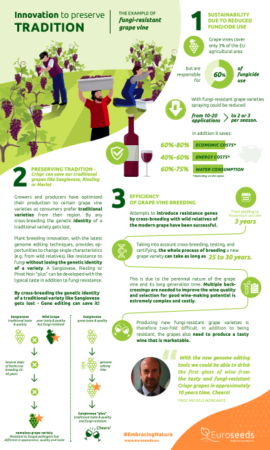- Living Links Connecting the United Nations Sustainable Development Goals: Small-Scale Farmers and Agricultural Biodiversity. Want to address a whole bunch of SDGs at once? Here’s a tip…
- Archaeology for Sustainable Agriculture. Sustainability is not forever.
- A Congo Basin ethnographic analogue of pre-Columbian Amazonian raised fields shows the ephemeral legacy of organic matter management. Another example of the above?
- Genebank Phenomics: A Strategic Approach to Enhance Value and Utilization of Crop Germplasm. A lot of useful phenotyping can be done fast and cheap, and genebanks should do it.
- LeafMachine: Using machine learning to automate leaf trait extraction from digitized herbarium specimens. This might help with the above.
- Affordable Phenotyping of Winter Wheat under Field and Controlled Conditions for Drought Tolerance. This certainly could. Basically a supermarket cart with a drone mounted on top of it.
- Plant Breeding Capacity in U.S. Public Institutions. It’s in trouble.
- Redomesticating Almond to Meet Emerging Food Safety Needs. Turning to peach, wild and cultivated, to reduce immunoreactivity and control aflatoxin and Salmonella. Somebody say public breeding is in trouble?
- Genetic variability among Ethiopian sorghum landrace accessions for major agro-morphological traits and anthracnose resistance. From 360 accessions to 10. Let’s hope at least the public sector can get hold of them.
- Review: Genetic and genomic selection as a methane mitigation strategy in dairy cattle. Gotta measure emissions on individual animals.
- Genome sequence and comparative analysis of reindeer (Rangifer tarandus) in northern Eurasia. Two domestications, affecting at least a dozen genes. No word on methane.
- Genomes on Canvas: Artist’s Perspective on Evolution of Plant-Based Foods. Crowdsourcing historical images to trace crop evolution.
Nibbles: Genebank manual, ABS UK, Mad veggies, Trad oysters, Egyptian diets, Cotton politics, #ArtGenetics
- How to run the Nepal genebank.
- UK government advice on ABS.
- Traditional vegetables in Madagascar get some help at last.
- Traditional, sustainable oyster management. Unfortunately the people who knew about it are now in Oklahoma.
- Eat like an (ancient) Egyptian.
- Pakistan and China make a very big thing of exchanging some cotton germplasm.
- Tracking crop evolution through paintings.
Visualizing the use of crop diversity
A couple of nice infographics for you today. Here’s one on forage genetic resources conservation and use, courtesy of the CGIAR Research Programme on Livestock. Click on the numbers to see the interactive elements.
And here, from Euroseeds, is an explanation of how gene editing could save beloved beloved grape varieties from fungal pests without (hopefully) changing their taste or wine-making features. This one is not interactive, though, so download the PDF to see it properly.

And yes, attentive readers will have noticed that both were included in Nibbles yesterday, but I thought they deserved re-upping, as the cool kids say.
Brainfood: Sled dogs, Chicken origins, Ancient livestock, Tenure and deforestation, Buckwheat, Soybean pangenome, Yam bean nutrients, Orphan legumes, Wild seeds, SeedGerm, Coconut conservation
- Arctic-adapted dogs emerged at the Pleistocene–Holocene transition. Sled dogs arose in Siberia, where they interbred with wolves.
- 863 genomes reveal the origin and domestication of chicken. It was Gallus gallus spadiceus from southwestern China, northern Thailand and Myanmar that was domesticated, possibly by rice and millet cultivators, according to Dorian Fuller, who disagrees with the domestication dates but likes the rest of the paper.
- Fodder for Change: Animals, Urbanisation, and Socio-Economic Transformation in Protohistoric Italy. In first-millennium BCE Italy, pigs grew in importance, cattle increased in size, sheep breeds differentiated according to use, and the chickens was adopted and adapted.
- Formalizing land rights can reduce forest loss: Experimental evidence from Benin. Randomized control trial shows land registration is associated with less deforestation.
- Buckwheat (Fagopyrum sp.) genetic resources: What can they contribute towards nutritional security of changing world? Not much until given the full -omics treatment, apparently.
- Pan-Genome of Wild and Cultivated Soybeans. The pan-genome is the new genome. Wait, did I use that before?
- Developing the role of legumes in West Africa under climate change. Lesser know, orphan legumes could step in for cowpea in some places, if only we knew more about them. Like a pan-genome, I guess.
- Evaluation of Nutritional and Antinutritional Properties of African Yam Bean (Sphenostylis stenocarpa (Hochst ex. A. Rich.) Harms.) Seeds. But we do know more about them! Lots of variation available to combat protein malnutrition, if only farmers grew more of the stuff. Oh so now it’s their fault?
- Conserving orthodox seeds of globally threatened plants ex situ in the Millennium Seed Bank, Royal Botanic Gardens, Kew, UK: the status of seed collections. Some decline in germinability for about 16% of samples. Includes successful germination protocols for 165 globally threatened seed plant taxa.
- SeedGerm: a cost‐effective phenotyping platform for automated seed imaging and machine‐learning based phenotypic analysis of crop seed germination. Fancy kit and maths can match seed specialists in scoring radicle emergence. But will it work with wild seeds? MSB unavailable for comment.
- In Situ and Ex Situ Conservation of Coconut Genetic Resources. Beyond coconut-only genebanks. I’d like to see SeedGerm work on this lot. Check out the whole book.
Nibbles: NHM, CGN, NordGen, ICRISAT, Chai, Cacao, Coffee, Amazon, Indian aromatics, Spying, Talking cattle
- Dr Sandy Knapp on botanical monographs. Solanum, of course.
- Dr Joukje Buiteveld on fruit field genebanks in the Netherlands.
- NordGen adopts GRIN-Global.
- Hybrid pigeonpa in the Indian news.
- All the tea in India. And Ireland?
- The rise of craft chocolate.
- And here’s the beverage trifecta: coffee in Ethiopia.
- Seed collecting in Brazil for reforestation.
- NBPGR does medicinals.
- You wanna be a “germplasm acquisition coordinator“? I bet you do. But watch out…
- Podcast on cattle domestication. Dr Hans Lenstra from Utrecht University in the hot seat.